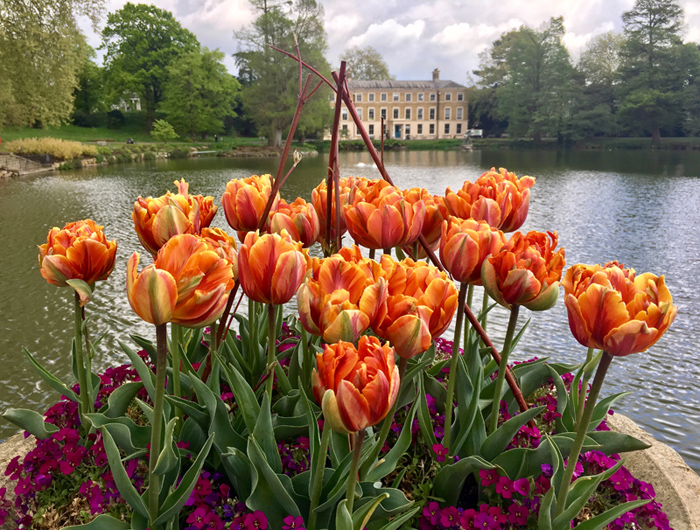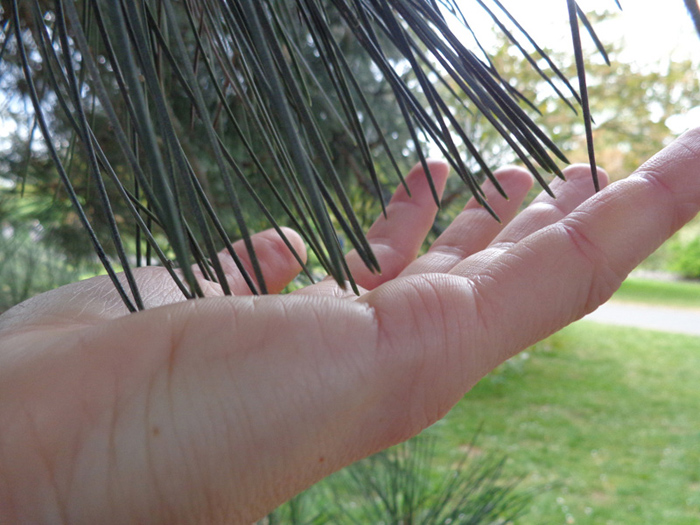By Maryssa Cook-Obregón – MA Fashion Futures, London College of Fashion
On Saturday April 22nd, which also happened to be Earth Day, organised by Postgraduate Community Ambassador Maryssa Cook-Obregón, a group of UAL postgraduate students went on a visit to Kew Gardens. here Maryssa reports back on the special trip.
The weather luckily held out for us and the students spent a sunny Earth Day experiencing the arboretums, greenhouses, water lily ponds, and wild flower meadows that make this botanical garden the dynamic and beautiful space that it is.
The theme of the visit was to photograph instances within the gardens where nature could inspire an artistic or design-orientated expression. Students brought along their cameras, which ranged from digital cameras to phone cameras. There was a range of courses and disciplines represented in this excursion, which made for interesting photos. At the end of this blog post, there will be a gallery of photos that students on the visit have chosen to share.
This disciplinary diversity manifested itself in the range of photographic styles that abounded during this visit. There were some students on this visit who are currently enrolled in photography courses. Their photos of the gardens were a fascinating expression of abstract forms that they achieved employing unique techniques they have developed while on their course.
Other students took a more traditional approach to photography and took some landscape photos that could become the next generation of scenic postcards for the Kew Gardens gift shop. Among some colourful photos of the gardens and the landscape, there were also some stunning up-close shots of flowers in bloom.
Some students gravitated their photographs toward the whimsical forms that abound all over the garden, among which include the curious branch formations of some trees, the Victorian steel and glass structure of the Palm House conservatory, and the hive-like structure of latticework and LED-lights that is known as the Hive, which is an outdoor installation by artist Wolfgang Buttress.
Interestingly, the Hive is as beautiful as it is a marvel of scientific feat; its LED-lights flicker and an orchestral arrangement plays according to the movement of bees that live in a nearby hive in the gardens. Effectively, this beehive, which is connected to the sculpture, will determine how and when the lights and musical notes will activate.
Please see gallery below to experience the artistic visions our students had on this visit to Kew!

Above photo by Zannah Cooper, MA Material Futures, Central Saint Martins (inside of the conservatory windows)
The event enabled Postgraduate students to spend time with students from different courses at UAL.
Here are the courses they are studying:
- MA Material Futures, Central Saint Martins
- MA Fashion Futures, London College of Fashion
- MA Photography, London College of Communication
- MA Design Management Cultures, London College of Communication
- PhD Researcher, Central Saint Martins
- MA Fine Art, Central Saint Martins
- MA Art and Science, Central Saint Martins
- MA Academic Practice, Central Saint Martins
- MA Textile Design, Chelsea College of Arts
- MA Fine Art, Chelsea College of Arts
- PhD Researcher, Chelsea College of Arts
Kew Gardens
Kew is London’s largest UNESCO World Heritage site offering unique landscapes, vistas and iconic architecture from every stage of the Gardens’ history. Their collection of living plants is the largest and most diverse in the world, growing out in the landscape and within our glasshouses and nurseries.
Since it was founded in 1759 by Princess Augusta, Kew has grown into a global leader in plant and fungal science and an international visitor attraction, designated a UNESCO World Heritage Site in 2003.
Today Kew has the largest, most diverse collections of living and preserved botanical specimens in the world. The landscape contains a great scientific collection of over 14,000 trees, including rare and ancient varieties. Kew also grows over 30,000 different kinds of plants from tropical, temperate, arid and alpine climates, many of which have a high conservation status. These collections provide a living reference library for our scientists, and a dynamic landscape in which to display the beauty and wonder of this diverse natural kingdom on which all life depends.








